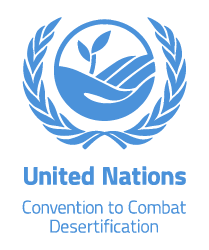Location
The United Nations Convention to Combat Desertification in Those Countries Experiencing Serious Drought and/or Desertification, Particularly in Africa (UNCCD) is a Convention to combat desertification and mitigate the effects of drought through national action programs that incorporate long-term strategies supported by international cooperation and partnership arrangements.
Members:
Resources
Displaying 76 - 80 of 585Landscape Sourcing: Sustainable business using the landscape approach
The WWF’s Landscape Sourcing Report: Sustainable Business Using the Landscape Approach makes a case for the private sector to adopt landscape approaches to sustainably strengthen and increase cost effectiveness within their supply chains.
Restoration in Action Against Desertification. A manual for large-scale restoration to support rural communities’ resilience in Africa's Great Green Wall.
This publication supports processes related to rural communities’ resilience in implementing land restoration of the Great Green Wall Programme on the ground. It serves a dual purpose of consolidating biophysical operations and socio-economic assessments, and is mainly built on five-year interventions and practical experiences gathered through Action Against Desertification. The first part of the publication is a practical manual expressly created for stakeholders, partners, non-governmental organizations and community-based organizations.
Regreening Africa: A bottom-up transformation of degraded lands
It is estimated that 20% of global land is either degraded or undergoing degradation, leading to an annual loss of 12 million hectares of productive land (UNCCD 2017). In Africa, some 715 million ha are degraded, including 65% of all arable land, 30% of all grazing land and 20% of all forests. This is due to increasing populations, poor land management, institutional challenges and climate change (Gnacadja and Wiese 2016).
Evicted by Climate Change: Confronting the Gendered Impacts of Climate-induced Displacement
In a world in which poverty is increasingly concentrated in vulnerable or fragile states, and fragility is increasingly driven by climate change, climate-induced displacement has become one of the most visible manifestations of the relationship between ecological and societal breakdown. Newest figures from the Internal Displacement Monitoring Centre reveal that over 70% of the 33 million newly displaced people (2019) had climate-related triggers.
IPBES Workshop on Biodiversity and Pandemics
Land use change is a major global driver of pandemic risk. Land usechange is a significant driver of the transmission and emergence of infectious diseases 40,177-179. Land use changeis cited as the cause of over 30% of emerging infectious diseases, and correlates significantly withthe emergence of novel zoonoses globally 13,180. However, the mechanisms by which diseases emergeare context-specific and scale-dependent.


